neuron
Latest
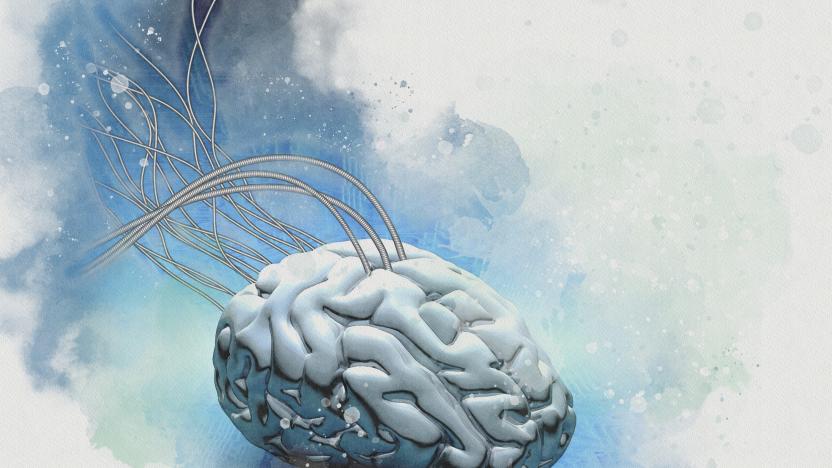
Samsung hopes to 'copy and paste' the brain to 3D chip networks
Samsung says it has developed an approach that would 'copy and paste' a brain's neuron map to 3D chip networks — if and when the technology is ready.
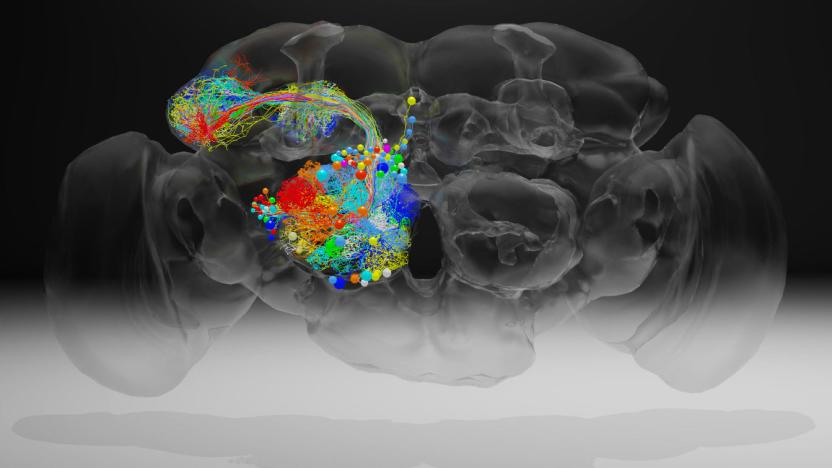
Researchers capture high-resolution image of a complete fruit fly brain
Scientists have created a high-resolution image of a fruit fly brain that will let researchers trace the connections of neurons throughout the brain. A team at the Howard Hughes Medical Institute's Janelia Research Campus led the work, which was recently published in Cell. Davi Bock, the lead researcher on the project, said in a statement that this level of resolution hasn't been achieved before and it will allow scientists to better understand which neurons play a role in behaviors exhibited by fruit flies.
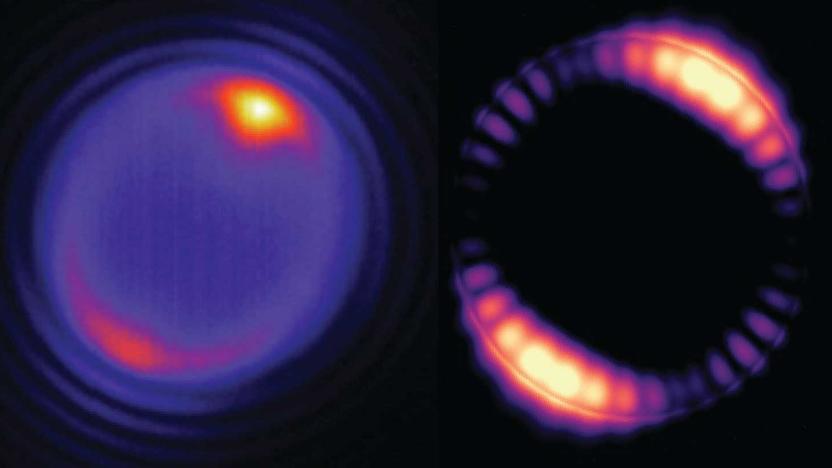
Cell-sized 'microlasers' could regulate brain activity
Scientists have spent years creating ever-smaller lasers. Berkeley Lab's latest invention, however, is something special -- and could lead to a significant change in medicine. An international team at the school has developed "microlasers" that are smaller than a red blood cell. The researchers discovered that 5 micron-wide polymer beads mixed with exotic nanoparticles (sodium yttrium fluoride infused with thulium) could reliably emit bright light on specific wavelengths when exposed to infrared light. The concoction makes light bounce around the inner surface of the bead, creating collisions that can repeatedly amplify the light -- it's similar to the "whispering gallery" effect that lets you hear a quiet sound across a giant space with the right acoustics.

Flat microscope for the brain could help restore lost eyesight
You'd probably prefer that doctors restore lost sight or hearing by directly repairing your eyes and ears, but Rice University is one step closer to the next best thing: transmitting info directly to your brain. It's developing a flat microscope (the creatively titled FlatScope) that sits on your brain to both monitor and trigger neurons modified to be fluorescent when active. It should not only capture much more detail than existing brain probes (the team is hoping to see "a million" neurons), but reach levels deep enough that it should shed light on how the mind processes sensory input. And that, in turn, opens the door to controlling sensory input.
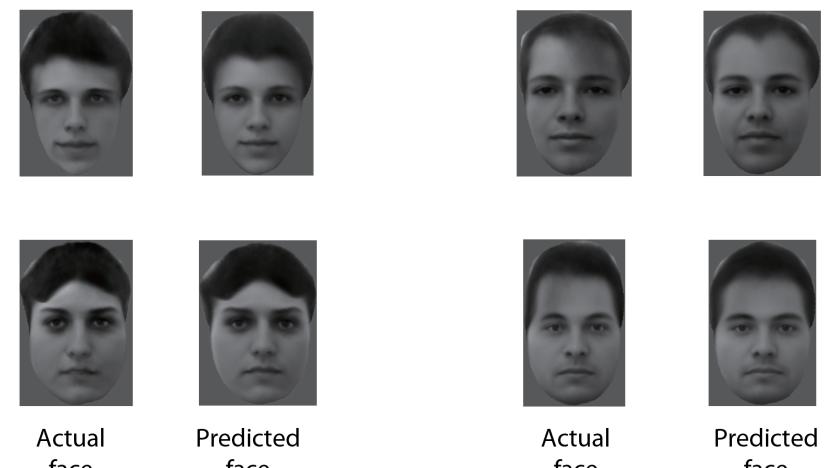
Scientists now know how your brain differentiates faces
Researchers at Caltech have taken a huge step in figuring out how the brain processes faces. In a study published this week in Cell, the team found that the brain only needs around 200 neurons to differentiate faces from each other.
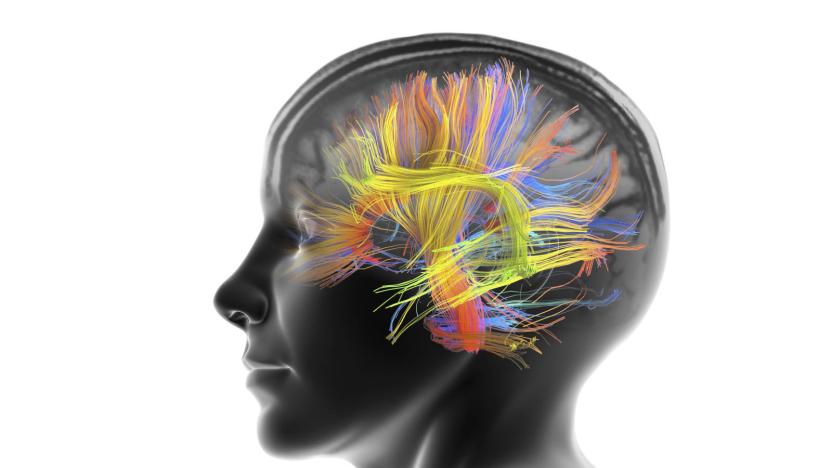
Your brain always has a backup plan
You may not always be consciously considering a Plan B when you're making a decision, but that doesn't mean it doesn't exist. Queen's University researchers have discovered that the human brain's motor neurons will prepare for multiple actions before making a decision. The team learned this by conducting experiments where volunteers were asked to guide a cursor toward one of two targets before they knew which one they were supposed to pick. While it was easy for the test subjects to consciously steer down the middle, the scientists took the cursor increasingly out of sync to make people compensate through unconscious actions. Sure enough, the volunteers' movements were an average of the movement paths needed to reach the targets, not the average between the positions -- their brains were already prepping for both paths.
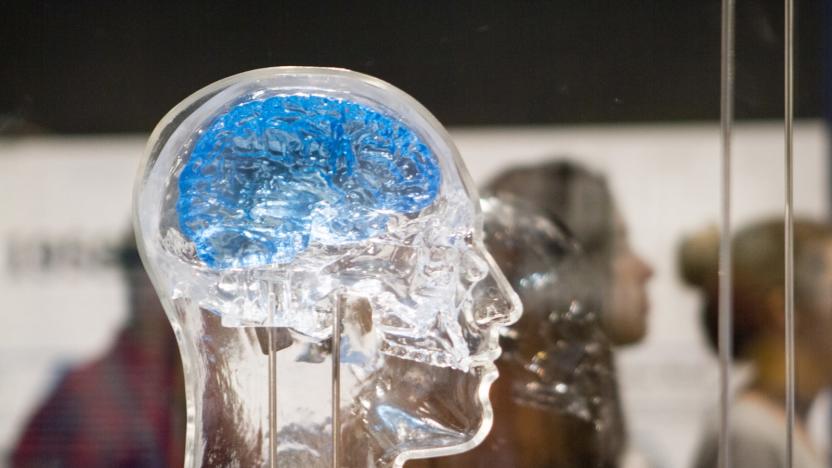
Brain mapping could lead to better Parkinson's treatments
When you repair electronics, you frequently test individual parts to see how they affect the whole. Why not try that with the brain? Stanford is doing just that. It developed a technique that fires specific kinds of neurons to map the brain and identify problems caused by Parkinson's and other diseases. The approach first uses optogenetics to make neurons activate in response to light, and follows up with a functional MRI scan to look for the increased blood flow that indicates activity in other brain regions. A computational analysis maps that particular neural circuit and helps determine its role.

Super-fast camera records light-based 'sonic booms'
Scientists have suspected that light can create its own conical wakes, like a sonic boom, but how do you capture something that happens so quickly? With a very fast camera, naturally. Washington University in St. Louis has recorded these photonic shockwaves using a "streak camera" that measures both the image and temporal data at 100 billion frames per second. To visualize the cones, the team shot very fast green laser pulses (just 7 picoseconds long) through a tunnel full of dry fog and placed between plates made from aluminum oxide and silicone rubber. Since the laser moved faster in the tunnel than in the plates, it produced a sonic boom-like effect as some of the light dragged behind.

MIT model reveals role of inhibitory neurons in the brain
Recent digital tech advancements have produced prototype artificial neurons and light-based neural networks, but we're still discovering ways our brain actually works. Researchers at MIT have built a computational model that could illustrate how inhibitory neurons work efficiently to block others from firing.
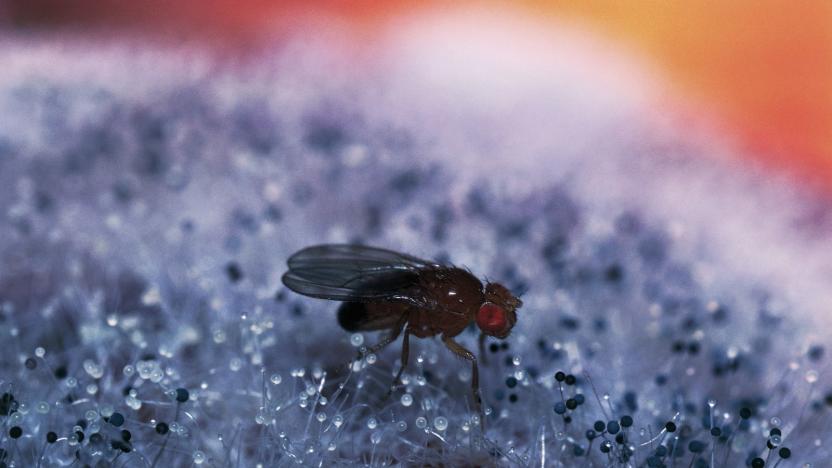
Scientists 'pickle' and map a fly's brain for the first time
Sure, fully mapping the human brain is impressive, but think about it: our thinking muscle is pretty big. Not to be outdone by this week's advances from the Allen Institute, scientists from Japan's Tokai University have made a 3D model of the neurons in a fruit fly's brain. Think about that for a bit. Exactly; it's tiny. Okay, ready to read some more? Cool.

23andMe data helps find genetic factors behind depression
Genetic samples from 23andMe users have contributed to scientific discoveries before, but never quite like this. Researchers have used gene samples from 307,354 23andMe customers to identify 32 genetic factors (15 genetic loci and 17 nucleotide polymorphisms) linked to major depressive disorder among people of European descent -- the largest-ever study of its type. The data hints that genes responsible for developing neurons may correspond to those triggering this form of depression, and that the genetic areas associated with depression may play a part in other mental disorders, such as schizophrenia.

3D imaging helps map tiny connections in the brain
Mapping brain connections is tricky -- chemicals can destroy the very structures you're trying to map, and an electron microscope can only tell you so much. MIT researchers aren't daunted, however. They've developed a new 3D imaging technique that lets you map the brain at multiple scales, including at resolutions that aren't practical with light-based microscopes. The new approach expands on a conventional chemical-based method of preserving brain tissue samples. If you flood the tissue with acrylamide polymers, you form a super-dense gel that lets you expand the sample up to 5 times its original size without hurting its structure, making it easier to study minute details. Numerous microscopes can study neural structures like synapses at resolutions as fine as 60 nanometers, which beats the 200nm you might get through conventional light microscopes.
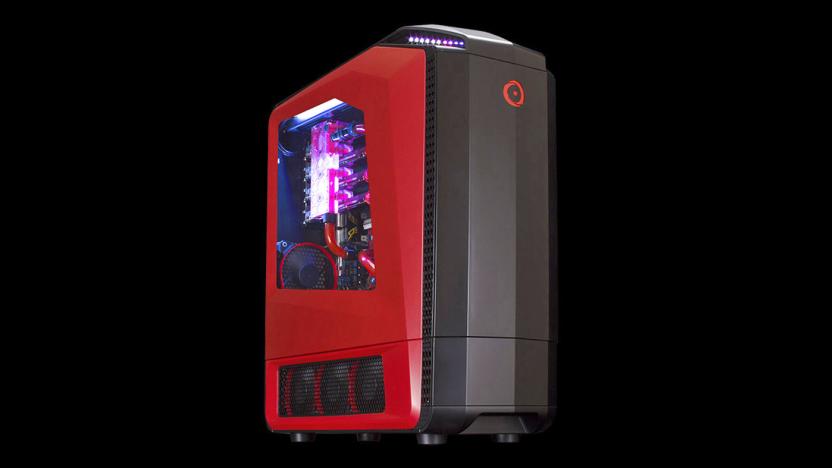
Origin PC, Velocity Micro jump on Intel's 10-core processor
Now that Intel has officially trotted out Core i7 Extreme Edition processors based on its shiny new Broadwell-E platform, gaming PC makers are coming out of the woodwork with systems that tout these extra-fast chips. You'll now find up to a 10-core processor in models from Origin PC (the Chronos, Genesis, Millennium and Neuron) and Velocity Micro (the Raptor Z95, Raptor Signature Edition and ProMagix HD80). If you like to run multiple apps at once or use software that thrives on multi-core CPUs (such as video editors), you're in paradise.

Scientists identify neurons that help you process emotions
Scientists just got one step closer to understanding the nuts and bolts of how your mind handles emotions. An MIT team has identified two neural connections in the brain's amygdala regions that process positive and negative emotional events. By tagging neuron groups with a light-sensitive protein, they discovered that the neurons form parallel but complex channels that respond differently to given situations. Some neurons within one of those connections will be excited by a feeling, while others will be inhibited -- the combination of those reactions in a given channel may determine the emotion you experience.

Researchers believe they've discovered 'anti-memories'
According to new research out of Oxford University, and published in the journal Neuron, a team of scientists believe that they've found the neurological equivalent of anti-matter. Just as anti-matter acts as the mirror image of subatomic particles, these "anti-memories" may exist as the bizarro versions of our memories.
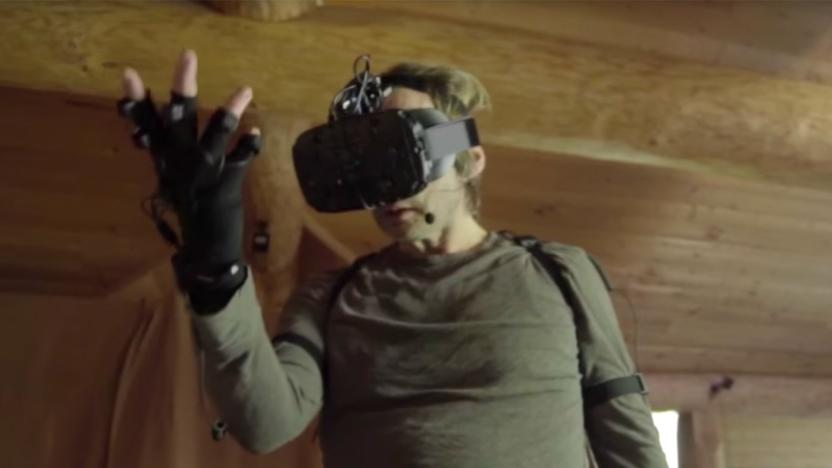
VR brings better motion capture to your video games
The problem with conventional motion capture is that you can't see the world you're supposed to be acting in. How do you get a feel for that epic fantasy landscape when you're staring at an empty room? Cloudhead Games has an idea. For its upcoming The Gallery: Call of the Starseed, it's using HTC's Vive virtual reality headset for motion capture, not just gameplay. The headset immerses actors in a scene while giving them more helpful teleprompting and visual cues. And when it's combined with a camera-free motion system like the Perception Neuron, you don't need a big, dedicated room -- performers can wander around a quiet corner of the office.

Easy-to-make mini brains will help medical research
If you want to study the effects of drugs or transplants on the brain without operating on the real thing, you typically have to break out some microelectronics and build a model yourself. Not exactly convenient or cheap, is it? If Brown University scientists have their way, however, just about any lab could make some simulated brain matter of their own. They've developed a technique that creates a miniature brain (really, a bundle of electrically active neurons) by extracting cells with a centrifuge and seeding a cell culture. So long as you have two to three weeks and 25 cents' worth of material, you'll have a complex, three-dimensional neural network to tinker with.

Europe's combat UAV takes to the skies over Italy
After nearly a decade of design and development, the first full-size nEUROn unmanned combat air vehicle (UCAV) demonstrator is ready for operational tests. Six European nations have coordinated on the UCAV's development. Defense contractor Dassault is responsible for its construction. The 41-foot wide, 10,000 pound drone has already passed a pair of initial trials since 2012 and is scheduled to undergo flight tests over Sardinia's Perdasdefogu range in the coming weeks. Should it succeed there, the nEUROn will head to Visdel, Sweden for weapons trials. [Image credit: Getty Images]

The Big Picture: Europe's unmanned combat drone concept
Pictured above, a mechanic works on Neuron, an unmanned stealth drone developed by a group of European nations, led by the French. "nEUROn" is a working concept for an "Unmanned Combat Air Vehicle" and includes fuselage designed by SAAB, Sweden. The craft has a 41 ft wingspan, weighs 10,000 lb when empty and can carry two 500 lb bombs. It first launched in December 2012, and has since completed 50 test flights -- the most recent completed this month. The project won't result in commercial production, instead serving to prove various technologies needed to for the next-generation of combat aircraft on the continent. [Image credit: Getty Images]

MIT can map the activity of every neuron in an animal's brain
Scientists have long yearned for a neuron-by-neuron illustration of brain activity; get that and you can see exactly what drives an animal's thoughts and reflexes. MIT may make those wishes come true, as it just revealed a system that produces a complete 3D neural activity map. The discovery revolves around a light field microscope (which refracts light to create a 3D image) that's optimized for looking at the electrical pulses of each neuron, right down to the millisecond time level. So far, researchers have created videos showing what's happening within the entire nervous system of a c. elegans worm, and the brain of a zebrafish larva.





